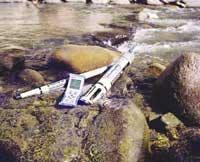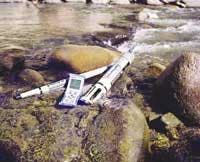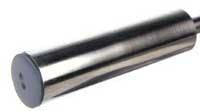A new submersible monitoring system offers integrated chlorophyll a and blue-green algae fluorometers for real-time monitoring of surface water quality.
Many public water systems, watershed management organizations, and government agencies that monitor and/or treat surface water from streams, rivers, lakes, and reservoirs have long had in place traditional algae monitoring programs for the identification and enumeration of algae that could adversely effect water quality, treatability, and safety.
While useful, the traditional fixed depth, periodic grab sample monitoring programs often do not yield meaningful results in real-time, can analyze only a few samples per day at best, are expensive in labor and analysis costs, and can miss important algae assemblages at specific depths as well as periodic but brief algae blooms at water treatment plant intakes and remote upstream watershed monitoring stations.
The Hydrolab DataSonde submersible water quality monitoring system from Turner Designs was developed to address those concerns.
The DataSonde submersible systems are monitoring and surveillance platforms for vertical profiling as well as fixed depth continuous monitoring in the field. They provide rapid in vivo fluorescence detection of algae produced chlorophyll a and cyanobacteria (blue-green algae) phycocyanin pigments.
For algal chlorophyll a detection, the integrated fluorometer has a user settable dynamic range of 0.03 to 500 mg/l as chlorophyll a, a fluorescence excitation wavelength of 460 nm, and an emission wavelength of 685 nm. For cyanobacteria phycocyanin pigment detection, the second fluorometer has a user settable dynamic range of ~100 - 2,000,000 cells/mL, fluorescence excitation wavelength of 595 nm, and an emission wavelength range of 670 nm. Both configurations have excellent turbidity rejection and ease of calibration with a solid secondary standard.
To start and optimize a surface water monitoring program, two Hydrolab DataSondes configured with two integrated fluorometers, one for chlorophyll a and a second for cyanobacteria phycocyanin, should be used. One would be used for vertical profiling and another for fixed depth continuous monitoring.
Detection of significant amounts of in vivo chlorophyll a and phycocyanin pigments can be used to determine at what depths to take discrete field samples for algae identification and enumeration, taste and odor compound analysis, and cyanobacteria toxin testing.
With the system, water treatment plant operators can be notified of potential problems such as filter clogging, taste and odor production, harmful algal bloom (HAB) detection and possible cyanotoxin production, when to start and stop powdered activated carbon (PAC) feed, what depths to open and close intake valves, and when to feed algaecides if needed.
The Hydrolab DataSonde submersible systems are rugged, easy to calibrate and maintain, and can be field adapted for rapid profiling and datalogging. The systems also can be configured with other relevant sensors including temperature, specific conductance, pH, dissolved oxygen, ORP, depth, salinity, and turbidity. Trend analysis of algal chlorophyll a and cyanobacteria phycocyanin pigments with these additional parameters enhances water monitoring and treatment response.
Even during periods when algae and cyanobacteria numbers are low and when algal blooms or taste and odor outbreaks have rarely occurred in the past, useful data can be obtained to determine baseline conditions for predictive modeling during the more likely times. And, looming on the horizon are possible future EPA Unregulated Contaminant Monitoring Rule (UCMR) requirements to monitor cyanobacteria and their toxins (see EPA Drinking Water Contaminant Candidate List 2, Notice, Federal Register, April 2, 2004, pages 17406-17415, "Cyanobacteria (blue-green algae), other freshwater algae, and their toxins").
By using the Hydrolab DataSonde systems in an integrated monitoring program now, water utilities can begin monitoring and assessing their surface water supplies.
For additional information on the systems, visit Hydrolab's web site at www.hachenvironmental.com or call Hach Environmental's customer service at Tel: 800-949-3766.





